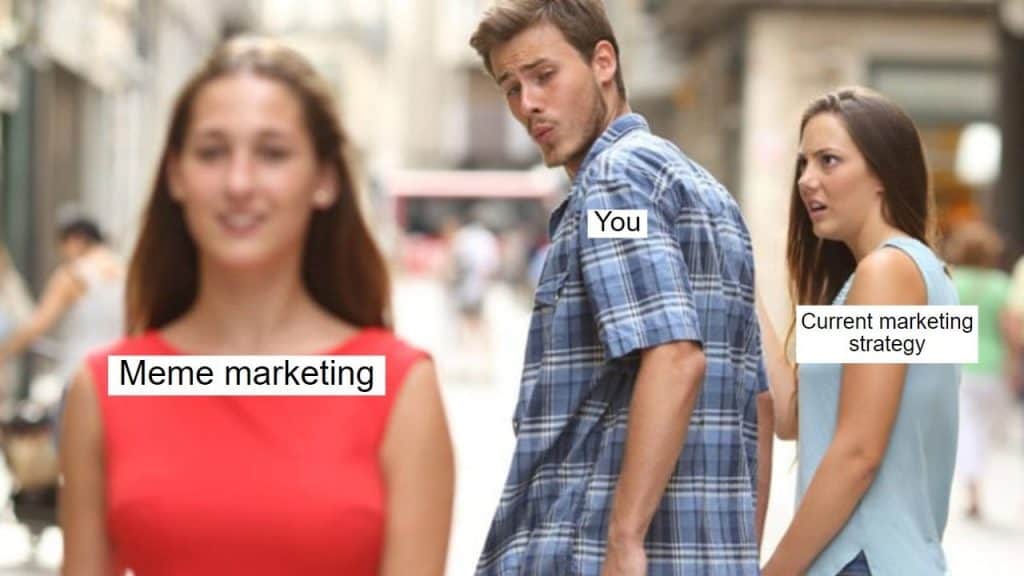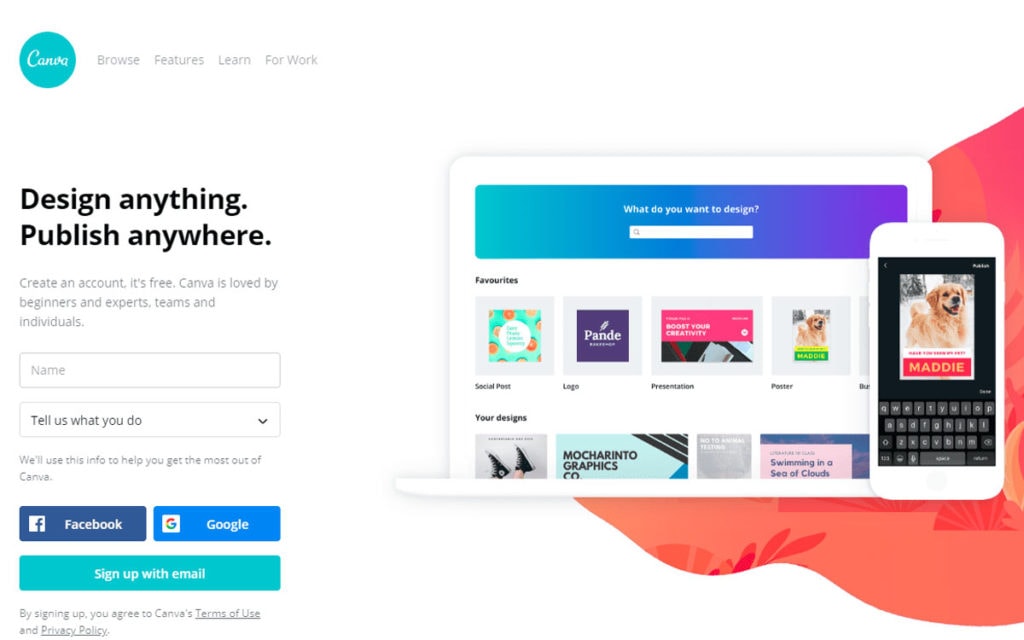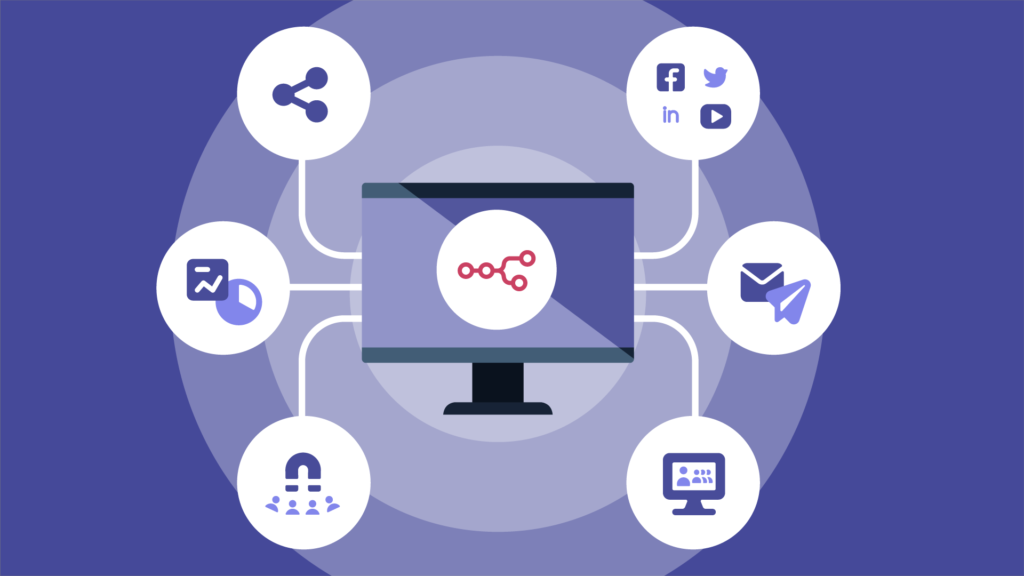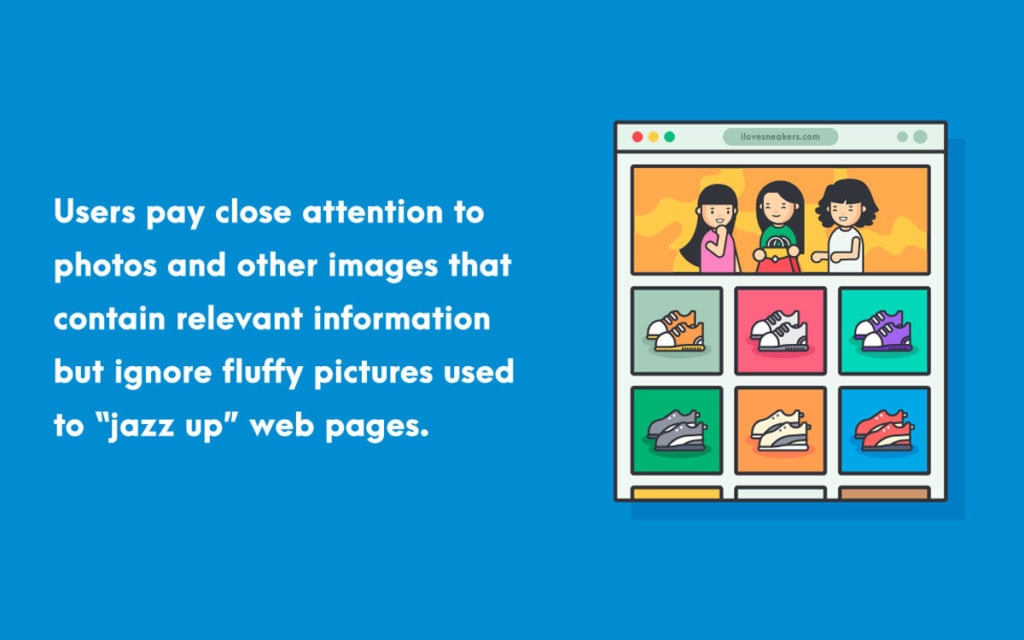A Guide to Creating Visual Content for Marketing
Did you ever notice your brain gets glazed over when too much text is thrown at it? Yes, eventually, all those words look like alphabet soup. This is where visual content steps in to save the day!
Visual content encompasses any materials communicating with pictures, images, graphics, and other visuals. In this age of digital technology overloaded with information, pictures are superheroes in content marketing. Why? Because they grab our attention like nothing else!
Consider: which would you instead read: a snooze-fest article without images or a piece with break-up visuals that catches the eye? The latter keeps you hooked, doesn’t it? That’s what creating visual content can do!
Moreover, our brains process images faster than text does. Thus, pictures make us more involved in the subject and facilitate effective learning and memorising.
Table of Contents
Why You Can't Afford to Ignore Visual Content
Need more evidence that visuals have power? Let’s see some numbers:
- Content enriched with infographics gets 94% more views than articles without images.
- Articles with photos receive 90% more views than those without pictures.
- Tweets (X Posts?) featuring images are twice as likely to be retweeted.
- Facebook posts and photos get over two times the engagement of those without any.
It’s as plain as day! Therefore, whether you are a blogger, an entrepreneur, a social media wizard or even any other content developer, overlooking the idea of creating visual content is impossible due to its grandeur effect on viewership and marketing in general!
But now, let us move forward to how we can make them!
The Different Types of Visual Content

Visual content exists in wide varieties thus and is ever-shifting, reminding one of flavours; some are bite-sized while others are full meals. These are the major types you need to know:
Images
These come first as the most familiar type of visual content. They consist of photographs, graphic designs, diagrams, memes, and any other picture you can imagine. Images are elementary to create, consume, and form a staple of visual marketing.
Videos
Video is one powerful storytelling medium that ranges from short social media clips and promo videos to longer educational or branded films. Since video takes priority over text, it’s no wonder it dominates the content field.
Infographics
Infographics represent a combination of images plus texts representing complex data or concepts distilled into easily readable graphics. They offer the best mixture of visual display and information provision.
GIFs and Animations
Have you seen those short looping video clips everywhere recently? That’s right – GIFs and animations, with their striking visuals and limitless creativity possibilities, have gone viral on the World Wide Web.
Data Visualisations
For example, charts, graphs, maps, diagrams, etc., serve as any visual representation of data. They make intricate statistics and metrics much more accessible to digest (and less boring).
Illustrations and Graphics
If it is custom digital illustrations or branded graphics, including icons you desire, then this, I guarantee, will add an exclusive touch to any item published. It conveys your brand personality.
Interactive Content
Quizzes, calculators, games, etc., are included here: items that use visuals to invite user participation; hence, these immersive experiences involve your audience in your published work.
Now that you know different formats let us see how dazzling your audience can become by creating original pieces visually!
Mesmerising the Audience: Design Principles for Visual Content

You cannot just put any visuals together and end it at that. No, sir, visual content is an art built on some principles to create a truly captivating experience. Here are the design rules you need to abide by when creating visual content for marketing:
Tell a Story
Every piece of visual content tells a story that resonates with its audience. Therefore, think about the narrative you want to communicate before designing it and how visuals can bring it out. What’s the big idea? The key message? These form the basis for all your visuals.
Identify Your Purpose
Are your visuals meant to educate and inform? Entertain and keep people engaged? Build a brand or improve conversion rates? Different purposes require different visual approaches; always have your end purpose in mind –it will govern all your design choices.
Keep it Simple
With short attention spans, simple, clean visuals make the most impact. Avoid clutter by using plenty of white space and sticking to only 1-3 main visual elements per piece. Think minimalistic chic rather than visual chaos.
Leverage Contrast
Contrast is what makes visuals pop like nothing else can. Experiment with contrasting colours, sizes, shapes and textures to direct attention where you wish. However, this principle should be applied sparingly as overdoing contrast leads to a visually overwhelming picture.
Embrace Consistency
Create a consistent look across all your content pieces using a cohesive visual style that ensures brand recognition. Use the same colour palette, fonts, illustration style, etc., thus instantly making all your visuals recognisable as yours.
Spark Emotion
The best visual content hits us right in our articles and makes us feel something – humour, inspiration, awe – whatever you want! Infuse personality through colour psychology, facial expressions, overall tone & mood.
Optimise for Every Format
Visual content has to appear perfect wherever it may be viewed: desktops/mobile/various social platforms in today’s multi-device world. To have a seamless experience, design with responsive visuals in your mind.
By following these principles, you’ll create aesthetic eye candy visuals that are purposeful, passionate, and deeply resonant with your audience. Speaking of crafting mesmerising visuals…
Tools of the Visual Content Trade

Alright, you've got your visual chops down – now to learn about the tools that'll turn you into a bona fide design ninja! Here are the must-have apps and software for every type of visual content:
Image Editing
For everything from simple photo tweaks to complex graphic designs:
- Adobe Photoshop (the industry standard, though pricey)
- Canva (extremely user-friendly with tons of templates)
- GIMP (a free, open-source Photoshop alternative)
- Pixlr (simple online editor for quick edits)
Vector Graphics
To create awesome scalable logos, icons, illustrations and more:
- Adobe Illustrator
- Vectr (free, lightweight vector editor)
- Inkscape (open-source vector tool)
Infographics and Data Viz
Distill data into drool-worthy visuals with these tools:
- Venngage (beautiful charts and infographic templates)
- Piktochart (drag-and-drop infographic awesomeness)
- Infogram (interactive data visualisations)
GIFs and Animations
Animate all the things with:
- Adobe After Effects (complex motion graphics/animations)
- Photoshop (basic GIF creation and animation)
- GIPHY (create GIFs and stickers from video clips)
Video Editing
For cinematic splendour on any budget:
- Adobe Premiere Pro (costly but versatile)
- Final Cut Pro (excellent for Mac users)
- Camtasia (screencasting and video tutorials)
- Animoto (quick videos from photos/video clips)
The best part? Many of these tools offer free trials or limited free versions, so you can test-drive them before committing. Oh, and remember all the incredible free stock image/video sites!
Once you've mastered your favourite visual tools, it's time to start bringing your ideas to life!
Crafting Marvels: Content Types to Try

Okay, you know the tools – now let's explore some visual content ideas and formats you can start creating! Which ones call your creative genius?
Images and Graphics
- Custom graphics and illustrations (in your brand's signature style)
- Informative charts and data visualisations
- Inspirational/motivational graphics
- Memes and humorous visuals
- Product teasers and promotional graphics
- User-generated images and contests
Photos
- Behind-the-scenes peek into your business/industry
- Creative product/service photography
- Visual tutorials and how-to guides
- Inspirational quote graphics
- Location photography (e.g. office, events, community)
Videos
- Explainer and educational videos
- Product demos and reviews
- Customer testimonials and storytelling
- Corporate brand/culture videos
- Live videos (e.g. Q&As, interviews, events)
- Video blogs and episodic series
- Animated videos and motion graphics
- Creative marketing videos (promos, ads, etc.)
Infographics
- In-depth guides and process infographics
- Data-driven research and statistical infographics
- Thought leadership and trending topic infographics
- Infographic resumes and portfolios
GIFs and Animations
- Engaging social media animations and stickers
- Animated tutorial guides and how-tos
- Website animations (e.g. loading icons)
- Animated ads and promotional pieces
Interactive Content
- Quizzes and polls
- Games and contests
- Calculators and tools
- Assessments and surveys
- Interactive infographics
- 360° photos/videos
The possibilities are truly limitless! And as new visual formats emerge, creators have even more ways to innovate. Ready to start producing? Let's look at a simple content workflow.
Creating Visual Content: The Workflow

Like any creative endeavour, developing visual content follows a strategic process from conception to delivery. Here's a typical workflow:
- Ideation and Planning
- Brainstorm a killer visual content idea
- Define your goals and audience
- Plan content details (topics, format, etc.)
- Create a production plan and timeline
- Research and Preparation
- Gather info, data, and resources needed
- Define your critical message/narrative
- Create storyboards, wireframes, and mood boards
- Content Production
- Execute on production (design, video, etc.)
- Leverage tools and best practices
- Review and make revisions
- Optimisation and Promotion
- Optimise content for search, web, and social
- Add metadata, captions, descriptions
- Distribute and promote via owned channels
- Set up tracking and analytics
- Analysis and Iteration
- Review performance metrics
- Gather feedback and insights
- Identify wins and areas to improve
- Incorporate learnings for future content
This cyclical workflow ensures your visuals are developed with intention, refined to perfection, and released strategically for maximum impact.
Staying True to Your Brand
It is advisable to be creative and experiment with your art. However, your visuals must stay true to your company’s core identity, messaging and aesthetics. After all, visuals are such a significant part of your brand experience!
Here is what you can do:
- Create branding guidelines for visual elements (logos, colours, fonts, etc.)
- Develop design templates and toolkits.
- Create a unique illustration/photography style.
- Define the visual tone & personality of the brand.
In line with these guides, “you” branded media will stem from different campaigns and initiatives with room for creative diversity.
Ethical and Legal Considerations
As you venture into the visual realm, keep these ethical and legal principles in mind:
- Respect copyright and intellectual property rights
- Get proper permissions and licenses for any third-party assets
- Disclose sponsored, promotional or paid partnerships
- Maintain truth in advertising (no deceptive visuals)
- Protect individual privacy (get consent for using images)
Moreover, strive for inclusive, unbiased visuals that don't stereotype or discriminate. Use diverse representations and prioritise accessibility for all.
Metrics for Measuring Visual Success

So you've crafted killer visuals and released them into the world – how do you determine their impact? Pay close attention to metrics like:
- Engagement (comments, shares, likes, etc.)
- Views and impressions
- Click-through rates
- Dwell time and consumption
- Conversion rates
- Social sentiment and brand perception
- SEO performance (for visual search)
Track these visual KPIs over time and benchmark them against your goals. This data-driven approach allows you to double down on what works and optimise what falls flat.
Final Takeaways
Whew, we’ve covered a lot of ground on this visual content journey! Let’s recap the key highlights:
Today’s digital landscape has made visual content marketing its not-so-secret weapon. Visuals yield powerful results, from building brand recognition and social engagement to boosting SEO and conversion rates.
Nevertheless, not all visuals are created equal. The best ones follow simplicity, contrast or storytelling as core design principles for their production; these pictures will evoke emotions while staying true to your brand identity.
Use these tools right and have some skills in your arsenal. You can create many visually appealing marketing materials, such as images, videos, infographics, or animations. Just ensure you stick to a strategic production workflow and measure your success.
But above all else, keep experimenting and pushing your creative boundaries. It is an art form that becomes more innovative (or at least more wanted) each day.
So let it be! Create big ideas and transform them into captivating visuals that inspire people forever. The future will be immensely bright and visual for those who can make it happen.
Visual Content FAQs
Do I need visuals for every piece of content I create?
Text-only content still performs in some cases, but most of your marketing efforts must include images. Our brain is starving for sight! At a minimum, sprinkle texts with simple pictures, icons and data visualisations here and there.
How much should I budget for visual content?
There’s no one-size-fits-all answer, as the costs can vary significantly based on your resources, content volume, and professional needs. Many companies spend 10-30% of their marketing budgets on visuals. Moreover, you can start using what you can afford and adjust downwards or upwards depending on its usefulness.
What are the best image formats and sizes?
JPEG for photographs and PNG for graphics with transparent backgrounds are the most common (and flexible) digital image formats. Additionally, ensure that images are created larger than 1200px to work well on both desktops and mobiles when optimising them.
How do I make visuals consistently without a design team?
For instance, Canva offers templates, assets, and simplified, user-friendly editing features. Alternatively, use freelance visual designers or unlimited design services.
How do I optimise visuals for search engines?
Use descriptive alt text, filenames and titles to gain visibility in Google Images and Visual Search results pages. Compress files to load faster; follow image SEO best practices like mobile optimisation.
Any tips for repurposing and reusing visual content?
Absolutely! Make sure to leave high-quality visuals after launching them initially. For example, resize images/videos according to different platforms or campaigns, freshen up old pictures through updated design elements or data, and combine relevant complementary materials into downloadable repositories.
Should I create visuals in-house or outsource them?
This depends on you, your skills and capacity. Most businesses do a mix of both, with simpler visuals being done in-house while more complex video projects, animation or intricate design work are outsourced to creative professionals.
